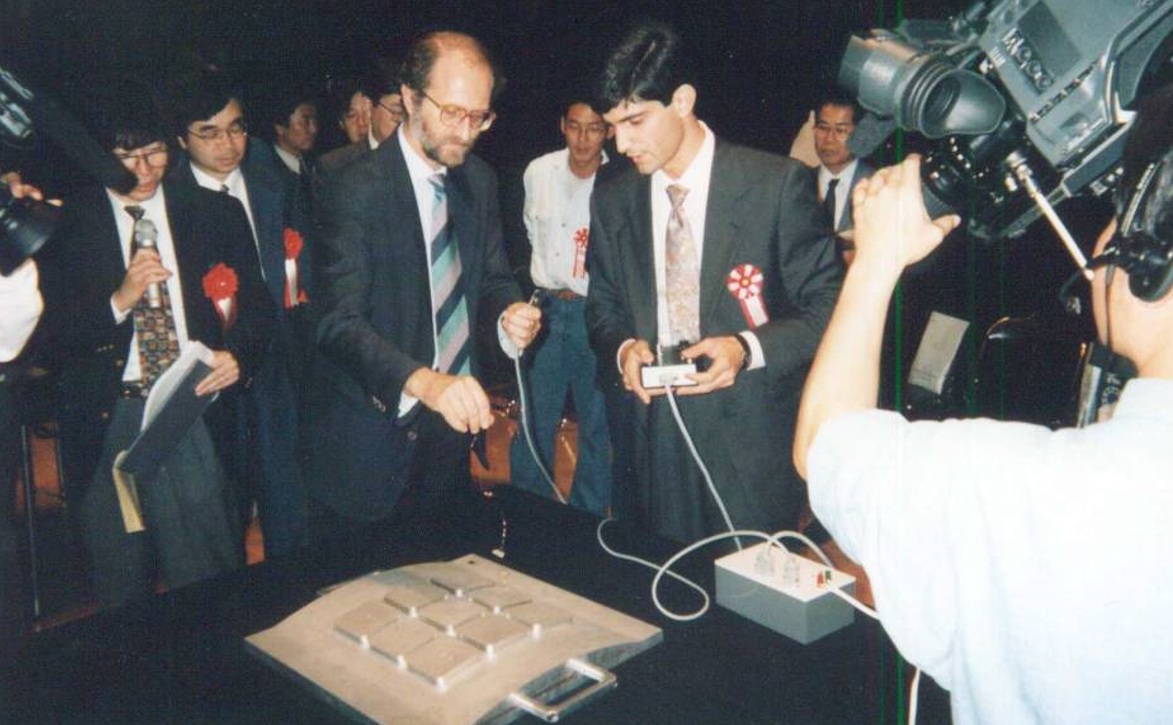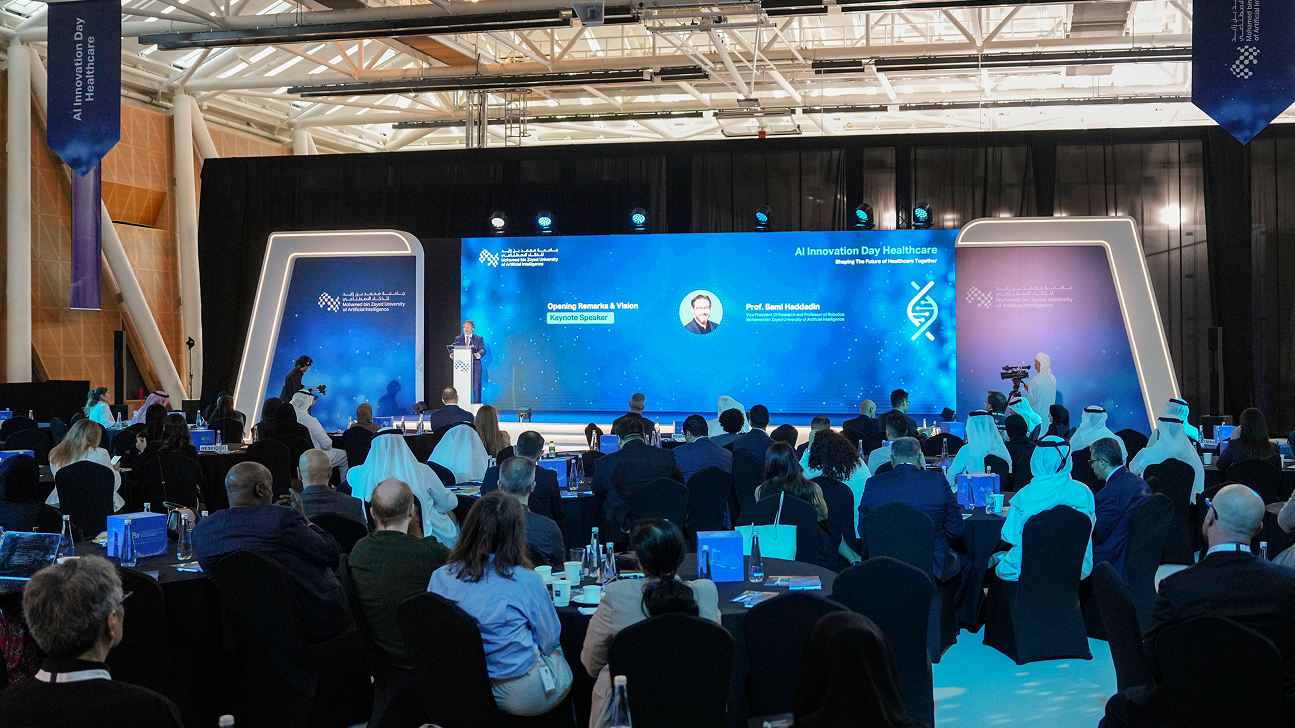The future of robotics, rooted in Italian ingenuity
Tuesday, November 18, 2025

Born and raised in Pisa, in the heart of Tuscany, Cesare Stefanini grew up surrounded by centuries of science and ingenuity.
Inspired by Da Vinci’s inventions, Galileo’s discoveries, and Brunelleschi’s impossible duomo – not to mention Vespa’s scooters, Piaggio’s aircraft, and Olivetti’s computers – it was perhaps inevitable that the young Stefanini would pursue a path in engineering.
“Pisa and the wider region is a cradle of applied and theoretical sciences, so I read all of that when I was a boy,” he says. “I loved engineering, and at that time, robotics and automation were very much blooming. It was the beginning of universal robotics, which was a very exciting time – moving from robots doing specific tasks to general tasks.”
Stefanini’s home city is also the location of Scuola Superiore Sant’Anna (SSSA): Italy’s leading center for robotics and home to the internationally renowned BioRobotics Institute. It was here that Stefanini’s passion for robotics fully matured, setting in motion a career that would take him from pioneering microrobots to FDA-approved surgical systems.
Now, as Professor of Robotics at MBZUAI, Stefanini is continuing that Tuscan legacy of innovation – developing medical robots that are pushing the boundaries of healthcare technology, and human–machine collaboration.
Early success
Stefanini’s journey from rural Pisa to global prominence started in earnest at the BioRobotics Institute, where he worked under its founder and his mentor, Paolo Dario. The Institute has long been a hub for pioneering work in bio-inspired and medical robotics, wearable technologies, and micro/nano-systems. Immersed in this environment of cutting-edge research and interdisciplinary collaboration, Stefanini not only honed his technical expertise but also began shaping the inventive approach that has defined his career ever since.
It was during this time that Dario suggested Stefanini take part in an international competition in Nagoya “During the first year of my master’s program, he proposed that I join an international robotics competition in Japan,” Stefanini recalls. “For the competition, small robots of either one cubic centimeter or one cubic inch should travel through a maze on a desk in the shortest time.

Stefanini at the robotics competition in Nagoya with his mentor, Professor Paolo Dario.
“We had to develop the components of the robots because in those days you couldn’t find anything of that scale off the shelf, so invention, ingenuity, and developing core technology was a big part of the competition.
“I won with a custom design, and that was really the beginning for me. I also got to visit the top universities of Japan, which felt like looking into the future. Especially then, Japan was the epicenter of technology, so it was a transformative experience. I decided to continue with a Ph.D. because I liked research, I liked discovering new things, and I could see that there was so much more I could do.”
Discovery across continents
And more he has certainly done. Stefanini pursued his Ph.D. at SSSA while spending part of his research at Stanford University’s Center for Design Research, working with robotics pioneer Mark Cutkosky.
His doctoral focus was on miniature robotics for medical applications, blending two fascinations: taking inspiration from biology, and designing tools to heal biological systems.
“Biology is the ultimate challenge from an engineering point of view,” he says. “Biological entities are very efficient, very capable, durable, robust, and smart. So, we have a lot to learn from them. And healing or repairing broken biological or ecological systems is the highest and hardest challenge for us because we are dealing with something so advanced.”
During his Ph.D., Stefanini collaborated with surgeons on developing robotic tools for delicate procedures such as anastomosis and tissue manipulation. He remembers vividly the moment when one of his miniature instruments was successfully used in a real surgical trial: “a life-changing experience”.
Collaborations with Intuitive Surgical, makers of the da Vinci robot, and Karl Storz in Germany helped turn prototypes into reality, while with Sten Grillner of Sweden’s Karolinska Institute, he explored neural control systems using robotic swimmers.
These projects straddled engineering, medicine, neuroscience, and AI: an interdisciplinary approach that has become the hallmark of his career.
Industrial impact
Stefanini’s broader research portfolio spans insect-scale robots, soft robots designed for safer human interaction, and autonomous legged tools for gastrointestinal endoscopy – early contributions considered seminal in medical micro-mechatronics. He has also developed biohybrid robotic systems recognized by both engineering and neuroscience communities.
One of his most notable contributions is as co-inventor of the microsurgical robot commercialized by Medical Microinstruments (MMI). The Symani Surgical System equips surgeons with articulated instruments just two millimeters wide, enabling super-microsurgery on structures smaller than a human hair. Tasks once beyond the reach of even the steadiest hands can now be attempted with robotic precision.
Symani has achieved both CE and FDA certifications, is being adopted in reconstructive and neurosurgery, and was named in TIME Magazine’s list of Best Inventions in 2024. For Stefanini, it represents a career milestone and proof that his research into miniaturized robotics can deliver life-changing impact.
Indeed, with more than 240 scientific publications and 18 international patents – 10 already industrially exploited by companies including GE, Amazon, MMI, Magneti Marelli, Pirelli, and Karl Storz – his work exemplifies translation from lab to market.
A new chapter at MBZUAI
Having served as Director of the BioRobotics Institute and later Dean of the Faculty of Applied Experimental Sciences at SSSA, Stefanini also founded and led the Creative Engineering Design Lab, pioneering cross-disciplinary approaches at the interface of robotics, AI, and biology. He also directed a healthcare engineering innovation center at Khalifa University, building technologies that bridged academic research with clinical practice in the UAE.
But when the opportunity to join MBZUAI arose, the prospect was too exciting to ignore.
“The chance of having a co-located experience with all these world-class faculty from around the globe was a unique possibility – especially because of the AI umbrella,” he says.
“There is also a clear agenda for healthcare in the UAE, which is much needed, and an area I plan to contribute to through MBZUAI.
His flagship projects at the University include training AI systems to automate specific surgical tasks, such as tissue dissection and suturing, and enhancing endoscopes and catheters with robotic control and improved sensory feedback.
“Robotically-assisted execution of surgical tasks is a very nice project because you have the foundational model aspect, the computer vision aspect, the machine learning aspect, and the human-machine interface angle. This unites people from all departments and labs from across the University, which is really beautiful.
“For the second project, imagine a surgeon having a kind of co-pilot while performing a task like removing a blood clot, where it’s vital to sense resistance and consistency. Instead of the surgeon controlling the proximal part, a robot could cooperate with the doctor to advance, withdraw, rotate, or steer, depending on sensory feedback.
“Another example is in electrophysiology of the heart, where pushing too hard can cause damage. With better imaging, modeling, and tissue deformation analysis, we could provide much more feedback to the surgeon.”
These initiatives aim not only to advance research but also to demonstrate clinical impact and attract industrial partners.
As he builds on his academic journey, it is clear that Stefanini is adding to the Tuscan tradition of curiosity and creativity while anchoring it in the AI age. From maze-running microrobots in Japan to FDA-approved surgical systems in Europe, his story reflects continuity and reinvention. At MBZUAI, that inventive spirit is now directed toward the next generation of medical robotics, with the potential to transform healthcare in the UAE and far beyond.
- healthcare ,
- innovation ,
- industry ,
- robotics ,
- faculty ,
- biorobotics ,
Related
AI Innovation Day at MBZUAI unites UAE leaders to shape the future of AI in healthcare
The event welcomed more than 200 healthcare leaders and featured talks and presentations by MBZUAI faculty about.....
- innovation ,
- healthcare ,
- research ,
- conference ,
- health ,
- AI Innovation Day ,
- on campus ,
MBZUAI to demonstrate AI as a driving force in energy transformation at ADIPEC 2025
The University will discuss and demonstrate some of the AI technologies it is developing to help shape.....
- robots ,
- K2 Think ,
- ADIPEC ,
- infrastructure ,
- energy ,
- innovation ,
- research ,
Faster, safer and smarter inspection: AI-powered robotics for industrial safety
MBZUAI's autonomous robotic system, LAIKA, is designed to enter and analyze complex industrial environments – reducing the.....
- autonomous ,
- research ,
- innovation ,
- energy ,
- industry ,
- robotics ,
- case study ,
- infrastructure ,


